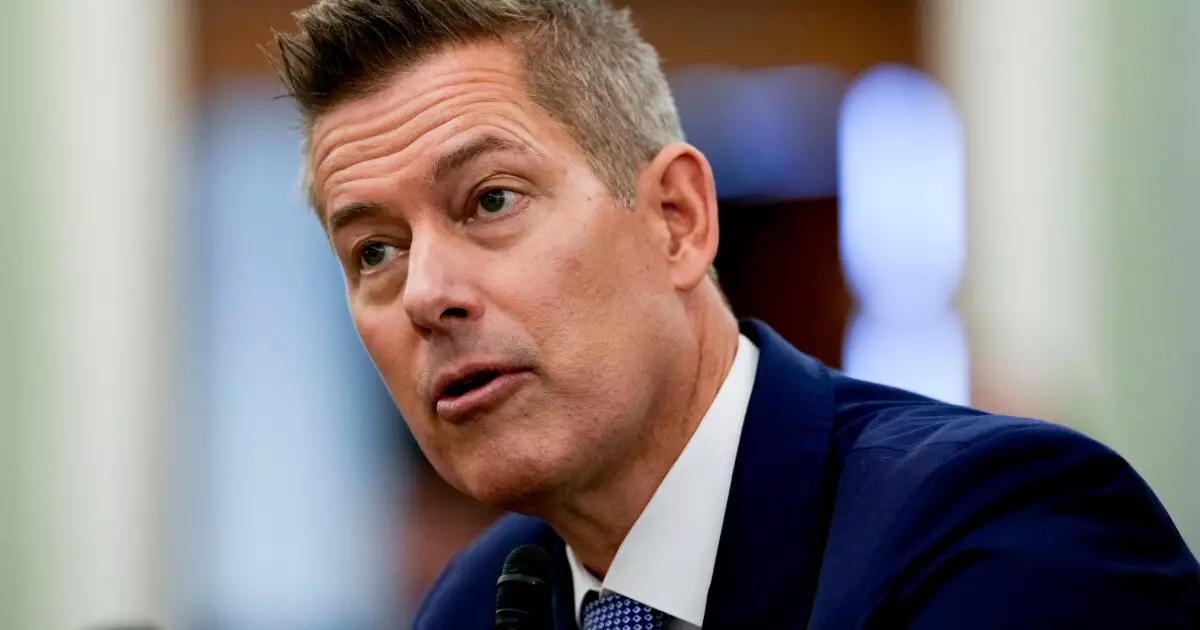As the federal funding bolstered by the Biden administration begins to taper off, a troubling transformation is unfolding in the public transit landscape. The recent directives from U.S. Department of Transportation Secretary Sean Duffy serve as a stark warning shot to transit authorities nationwide, urging compliance with public safety regulations while scrutinizing the financial backbone that supports these systems. In an era where cities rely increasingly on federal support, the potential for redirected or withheld funding creates trepidation, especially for urban transit systems that are already struggling to regain their footing post-pandemic.
The bureaucratic entanglements introduced through these letters may obscure the fact that aligning transit systems with safety requirements should not come at the expense of efficiency and responsiveness. The new focus, it seems, prioritizes compliance over innovation. This policy shift mirrors a wider trend where central management appears to impose one-size-fits-all solutions without considering local challenges and nuances.
The Financial Crunch: An Insurmountable Barrier?
With the continuing resolution providing only a marginal increase in transit funding, questions arise about the ability of transit agencies to meet both operational needs and new safety expectations. An examination of the numbers reveals an unsettling truth: the funding barely scratches the surface when weighed against the deficits caused by the pandemic. Agencies like the Southeastern Pennsylvania Transportation Authority report existential budget shortfalls in the hundreds of millions, hinting at a potential crisis brewing in urban transit.
Moreover, the reliance on matching funds from municipalities often ties local governments into a financial strain that may ultimately lead to transit cutbacks, further exacerbating urban mobility challenges. The irony is palpable: as cities strive to encourage public transportation use by enhancing services to mitigate climate change, they are simultaneously shackled by austerity measures that prevent them from investing in the very systems they seek to expand.
Sanctuary Cities in Peril: A Target of New Policy Directions
Cities classified as sanctuary jurisdictions are finding themselves in a precarious position, trapped between federal policy edicts and local governance. The looming threat of funding disbursements being withheld is not just a financial concern; it sends a subliminal message that compliance with federal directives is paramount, even at the cost of local priorities.
For instance, the $12 billion expansion of Chicago’s O’Hare International Airport—a project counting on a substantial federal investment—could very well become collateral damage in this political standoff. The apprehension is palpable, as prominent local leaders emphasize the fragility of financing that underpins vital infrastructure projects. Such tensions highlight a disconnect between federal oversight and localized needs that can have lasting socioeconomic repercussions for urban communities.
Impact on Existing Projects: The Ghost of Funding Cuts Past
Compounding these challenges is a troubling precedent set by the previous administration’s handling of discretionary transit programs. The recent guidance from federal authorities that encourages re-evaluating previously funded projects places an additional layer of uncertainty on a landscape already resettling from the disruptions of the past few years. Insights from former Department of Transportation Deputy Secretary Polly Trottenberg elucidate how actuation freezes threaten to destabilize long-held expectations surrounding transit funding and project continuity—even for initiatives that have already been green-lighted through meticulous application processes.
For many municipalities, this unsettling realization raises the stakes higher than ever, as they grapple with a complex interplay of state and federal demands. Instead of fostering the collaborative spirit necessary to bolster public transit, the current policy environment breeds apprehension and mitigates enthusiasm for innovative projects focused on sustainability and equity.
Transition or Stagnation? The Dilemma Ahead
The dilemma faced by transit systems today is somewhat akin to walking a tightrope. While there is a genuine desire to expand and innovate, the specter of stringent federal expectations looms large, casting doubt on what constitutes a viable path forward. The balancing act between maintaining safety and compliance, alongside a crippling financial landscape, will sharply determine the future of urban transit in America.
Ultimately, without a collective restructuring of funding allocations and a reprioritization of trust in local governance, we could witness the unraveling of essential transit networks. It’s a cautionary tale for American cities where every dollar, every initiative, and every decision will shape the trajectory of metropolitan mobility for generations to come.


Leave a Reply